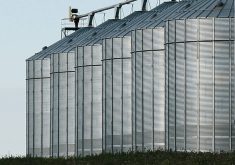Grain farmers be warned. The shortage of skilled labour being felt by other sectors is working its way into the grain industry.
“It isn’t just about horticulture and intensive operations like fruit and vegetables in Ontario,” Don Connick, a Gull Lake, Sask., crop and livestock producer, said during the recent annual Canadian Agricultural Human Resources Council forum in Ottawa.
“There also is a huge looming problem in the grain industry,” said the Agricultural Producers Association of Saskatchewan director. “There is a labour crisis looming in the grain industry because we need help during the harvest and it used to be retired farmers. They know how to run a combine but there increasingly are fewer of those around. Where do we get replacements who know what they’re doing?”
Read Also

Canada, Mexico look beyond U.S. as agri-food trade pact expands
Earlier this week Heath MacDonald, Canada’s Minister of Agriculture and Agri-Food and Mexico’s Secretary of Agriculture and Rural Development, Julio Berdegué, met to discuss bilateral relations and strengthen cooperation and trade ties between the two countries.
During the conference, retired Statistics Canada rural researcher and analyst Ray Bollman said Canadian agriculture reports 122,000 paid workers — 89,000 permanent and an average of 33,000 seasonal.
He said mechanization on farms is reducing the number of farm labourers needed.
Bollman said the median full-time wage on farm is $15 per hour and the median wage for part-time workers is $12.
However, while Newfoundland farmer Merv Wiseman, chair of the CAHRC, acknowledged that mechanization is reducing the number of farm workers needed, it does not solve the problem. “That also raises the bar on the skills needed for workers because we need people who actually can manage that technology.”
He said the agricultural industry continues to face a “looming crisis” of tens of thousands of farm worker positions unfilled because of the increasing difficulty of finding people with the needed skills willing to work on a farm.
“There’s no doubt a huge gap still exists,” he said in an interview.














